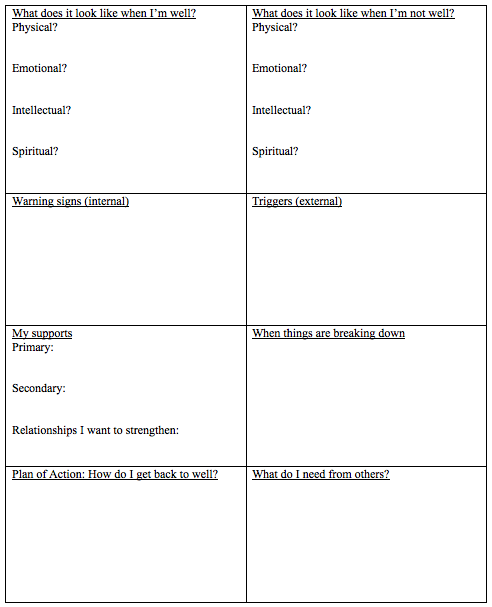When I first began in Private Practice, I noticed that new clients were not coming back for the second session. I knew I was doing something wrong in that first session (or free consultation) that wasn’t connecting with my clients. I started experimenting and tracking my conversion rate.
This is a rough guideline of what I have ‘fallen into’ over the years in private practice that has a very high conversion rate (rate of consults that turn into regular clients for me). I find this can be done in either 30 minutes or 60 minutes. Here are the major steps I do with some of the ‘scripts’ I find myself saying often.
1. Welcome/Orienting the client to the consultation session
The consultation session is a little different than a regular therapy session, so I make a point to tell the client what we are going to do, and what he/she will walk away with from our meeting.
Here’s a breakdown:
- Greet them and normalize that it can be weird, awkward or anxiety-producing to meet a therapist for the first time (or meet a new one).
- Tell them what we are going to do during today’s meeting. The important points to hit are:
- This is a time to get to know one another a little bit
- I’m going to be asking some questions to know what’s been going on for the client
- I’m going to be answering any questions that they have (I tell them it’s ok if they don’t have any)
- I’m going to share my thoughts and initial observations about what they shared with me, so that they know what I’m thinking and it aligns with their experience
- I’m going to share the general outline of what our therapy will look like (although we can pivot later if needed). This includes a preview of tools I will teach them, the order of things, how we will track progress, etc.
I know that’s a lot to get through, here’s a script:
Hi Jane, thanks for coming in today. It’s nice to meet you in person. I know it can be nerve-wracking to meet a new therapist, and I’ll be asking some personal questions today, so I thank you for taking the step to come in. Today we have a little bit of a different meeting than a regular therapy session. Today I will ask some nosy questions so I can really understand what’s been going on. But don’t worry, you can ask me nosy questions right back if you want to. I’ll answer any questions you have today, but it’s ok if you don’t think of any. After I ask my questions, I’ll share with you only my thoughts and observations about what you’ve told me, so you always know what I’m thinking and to make sure I really understand. Then I’ll share with you my initial thoughts and plan for how I’m going to help you feel better. Ok? Great! Let’s start.
2. Super-Short and Focused Diagnostic Evaluation
I’ve found the key here is to not get lost in the weeds, but identify the main clinical concerns right away, then ask a few follow-up questions to understand the severity and symptom presentation of that clinical concern. I save a more thorough mental health evaluation for another time. I want the client to feel heard right away.
Here’s a breakdown:
- Ask first about the main clinical concern by asking what brought them in, or how can you help?
- Normalize and Validate that concern
- Ask a few follow-up questions to get a broad understanding of the issue
- Ask about previous therapy experiences, and what was helpful and not helpful about those experiences, so you can quickly learn how the client responds to therapy in general (I make sure to incorporate this into the ‘plan’ that I share towards the end of the consult)
- Ask if there are any other major clinical concerns.
Here’s a script for a client struggling with Anxiety:
Therapist: Ok Jane, I know we spoke briefly on the phone, but I’d like to just start with a really broad question and go from there, so I will ask what brought you in today?
Jane: Well I’ve been feeling really anxious….
Therapist: I’m so sorry you’ve been dealing with that, it’s really hard. We see a lot of that here in the practice, so you are not alone.
*Now I ask some follow-up questions about this clinical concern, such as:
- When did it start?
- How bad does it get?
- Panic attacks? How many and when?
- How is this impacting your life right now?
- Medication? Helpful or not? Prescribed by whom?
- What helps it right now?
- Who knows about it? Support network?
- Family history?
Jane answers all these questions, and I normalize her symptoms along the way.
Therapist: Have you ever seen a counselor before for this or for anything? When was that? What was helpful about that? Anything about that not helpful?
*I’m listening for anything that the client found helpful in the past in therapy (if they have done it). Things like a therapist being directive, providing honest feedback, teaching tools, etc.
Jane answers….
Therapist: So I really hear you about the anxiety and am starting to think of some things we can do together that will really help that, but first let me ask, is there anything else going on that you think is important for me to know?
Jane answers…
3. Feedback to Client
This is where I thank the client for being so open and talking about difficult things, and provide feedback and a rough/initial diagnostic impression. I’m not rushing a diagnosis, and I don’t use that language (usually) with the client, but just like when you see the doctor, you want to know what they are thinking and that they understand why you came in. I emphasize that I hear them, reflect their own language back to them, and validate that their concern is not ‘just in my head’ but it’s serious enough that they came to a therapist about it, and that they deserve a professional’s help to feel better.
Here’s a script for our client Jane:
Thank you for answering all those nosy questions, Jane. I know this stuff is hard to talk about. It’s very clear to me that you have an above-average amount of anxiety and it’s really impacting your ability to sleep and your job. That must be so hard. You should know that what you have shared with me is not a normal level of anxiety that we all feel from time to time. I hear some markers of an anxiety disorder, and so you’ve been dealing on your own with a clinical issue. You can’t just make it go away by being hard on yourself, which I already hear that you are. If you could kick this by just telling yourself to calm down you wouldn’t be here right now. But you are, and I’m glad you are. You don’t need to be alone with this anymore.
In our next session I’ll ask some more about your symptoms and really make sure we get the right idea of what you’re dealing with, but I’m pretty confident in what I’ve heard that the focus of our work with be tackling this anxiety together.
4. Share Your Initial Plan (let the client know that you can help them)
This is such an important step. The client wants to know in a concrete way how you will help them with their issue. You don’t need to do an on-the-fly treatment plan, but as you listen to any clients, ideas pop into your mind of what may work well for the client. This is your time to share that, give examples, and give the client confidence that you are in control, that you ‘get’ them, and that you have a plan.
Things to keep in mind for this step:
- Frame the work in terms of ‘we’ rather than ‘you’ or ‘I.’ You and the client are a team now.
- Share an honest initial time-frame with the client. You’re not tying yourself down to that timeline, but you will have a sense of how ‘easy’ or ‘difficult’ the client’s issue is, so share that.
- Incorporate what was helpful about previous therapy (If there was any)
- Reflect the client’s own language in how they describe their symptoms to you, so they feel heard and understood. Don’t use overly-clinical or ‘jargony’ language.
Here’s a script for Jane:
I feel confident that we can get this anxiety under control and you can feel like yourself again. If you choose to work with me, I’m think that first we will jump right in to concrete and practical tools to help with your anxiety in the moment. I remember with your therapist back in college you liked having those tools you could turn to, so we will start there. We will also explore the causes and triggers of your anxiety so we can play offense, not just defense. We want to see those things coming, have a plan, and head them off. I will also work with you on some pretty easy tweaks to your sleep routine to get you some better sleep, which will help with anxiety. I think also, from what you have shared with me, that simply having someone to talk to about all of this will be helpful. You’ve felt alone and embarrassed about it, and I understand. But talking about it will help us move past the shame and implement these tools and strategies. I think we can really see a difference in around 3 months, based on my work with other clients who are going through what you’re going through.
5. Answer The Client’s Questions and Wrap-Up (giving them a choice to schedule for follow-up with you).
The last step is to ask if the clients have any questions for you. I usually find that at this stage, you’ve answered all of their questions. However, sometimes they have questions. I answer all of them as transparently as possible. Clients hardly ever ask a personal question. The most common question I’m asked is basically ‘Am I weird’ and ‘Can you help me?’ Those are easy times to validate/normalize and again reinforce your very rough treatment plan.
After that, we wrap-up and I see up the next session. I never want to pressure anyone, or assume that they feel comfortable being my client yet, so I give them a choice between scheduling our next session right now, or getting back to me after they think about it. Almost 100% of the time they schedule right then, but if they don’t, that’s ok too. I always remind myself that ‘you’re not for everyone’ and let it do. Oftentimes, the client that doesn’t ‘sign up’ right away will circle back to me in the future.
Here’s a script to wrap up:
Well Jane we’re almost out of time, I’m sorry to have to stop. We can do one of two things from here. If you feel comfortable that we’d be a good fit, we can go ahead and schedule our next session and I think it would be good for your progress to meet every week. If you want to think about it, that’s fine too. If that’s the case, I’d love your permission to follow-up with you via email in a few days so we can touch base before my caseload fills up again. What would you like to do?
6. The Follow-Up Email
I always send a follow-up email, no matter what (unless they tell me not to email them). This lets the client know that you’ve continued to think about them. It’s also an opportunity to offer something of value. I email with a short note saying it was really nice to meet them and, if they have ‘signed up’ to be a client, that I look forward to working with them. I say I have been thinking more about what they shared with me, and it make me think of this helpful article/book/podcast that I wanted to share and include a link. That’s it! Clients tell me they really love this follow-up.
This is also an opportunity to ask if a client wishes to meet again (if they didn’t schedule during the first consult).
Here’s a script:
Hi Jane,
I really enjoyed meeting you yesterday. We talked about some hard things, and I appreciate your openness. I was thinking further about that panic attack you had last week, and wanted to share this article about riding out panic attacks. It may be a good idea to share this article with your husband too, because I remember you mentioned he felt a bit powerless when that happens. Here’s the link to it. If you’d like to meet again and get started on the goals we spoke about, let me know and we will find a time what works with your schedule.
Warmly,
Erin
















